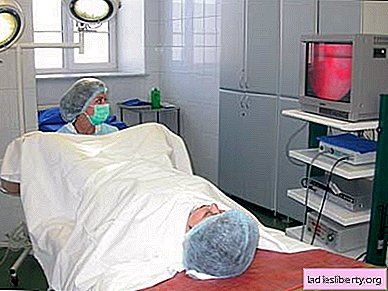
Fibromyoma - This is a neoplasm of a benign nature that develops on the uterus as a result of hormonal disorders in the body of a woman. It consists of connective and muscle tissue. If muscle tissue predominates, then the tumor is called myoma, and if the neoplasm consists mainly of connective tissue, it is fibromyoma.
Fibromyoma can occur in women of reproductive age. Most often, middle-aged women, up to 40 years old, are affected. However, in recent years there has been an increase in the number of cases among the younger generation, from the age of 20 years. Doctors explain the rejuvenation of the disease by an increase in the negative effects on the female body associated with poor ecology. But the greatest danger is early abortion and other surgical interventions that accompany the violation of the integrity of the genital organs.
Fibromyoma - causes
The impetus for the development of the disease is a certain hormonal failure, which can be a consequence of various factors. Formal causes of fibromyoma are:
• Changes in the quantitative composition and functional characteristics of receptors in myometrial cells,
• Failure in the hormonal function of the ovaries,
• Infections of an infectious and non-infectious nature in the internal genital organs,
• Poor blood flow in the pelvic organs,
• Infertility caused by abnormalities in the functioning of the reproductive system,
• Irregular sex,
• Vegetative-vascular disorders,
• Genetic predisposition to cancer,
• Infectious diseases suffered in childhood,
• Concomitant pathologies,
• Violations of the immune system.
Fibromyoma - Symptoms
Fibromyoma can manifest itself in different ways. The picture of the disease depends on a combination of factors, the determining ones of which are the woman’s age, limitation period of the neoplasm, hormonal background, the presence of concomitant deviations in health.
The main sign of fibromyoma is prolonged bleeding from the uterus, aggravated by pain in the lower abdomen. At the initial stage of the disease, heavy menstruation appears, which can last quite a long time, significantly exceeding the normal period. However, these symptoms are not observed in all sick women. The quality of the menstrual cycle depends on in which place the uterus has a neoplasm. In the case of a subperitoneal location of fibromyoma, menstruation most often passes with moderate blood loss.
In the presence of a large tumor, a woman has pain in the pelvic area, her body temperature rises, blood coagulation accelerates, and her leukocyte count rises.
The nature of the pain can be different, which also depends on the factors listed above. Most often, they are present throughout the menstruation, are pulling and aching in nature. The disease becomes acute when the fibromyoma begins to grow rapidly, deforming nearby tissues. During this period, the syndrome of "acute abdomen."
The presence of fibromyoma can also affect neighboring organs that experience pressure: the bladder, rectum, kidneys, and liver. Due to the growth of the tumor, these organs can also suffer, which will cause a malfunction in their work.
Fibromyoma - diagnosis
As a result of the initial examination, the gynecologist will be able to make a preliminary diagnosis using the patient’s story and the data obtained from the examination in the gynecological chair.
Next, a comprehensive examination of the whole organism is prescribed. The following activities are carried out:
• General examination, which includes determining the nature of the physique, the degree of hair growth, the identification of signs of obesity.
• Study of the quality of the thyroid gland (hormonal background).
• Examination of the mammary glands.
• Clarify whether concomitant diseases are present in the body.
• For 4 weeks, monitor the nature and development of fibroids, conducting regular gynecological examinations.
• The study of smears (for oncocytology and microflora).
• General tests of urine, blood, additional blood tests.
• Tests that determine the functional features of the ovaries.
• Colposcopy.
• Ultrasound examination.
• Sonography.
• Diagnostic curettage of the uterus.
• Determination of endometrial quality through metrosalpingography.
• Laparoscopic examination.
• Phlebography intrauterine.
Fibromyoma - treatment and prevention
The treatment of fibromyoma also depends on the nature of the tumor and the general condition of the body. It can be conservative or operational.
• Conservative method. It involves diet therapy (changing the quality of nutrition), treatment of vegetative-vascular disorders, vitamin therapy, normalization of blood flow, increasing immunity, antianemic measures, hormone therapy.
• Operational method. Removal of the tumor if its size exceeds the size of the uterus at 13 weeks of gestation. In the most severe cases, the uterus and appendages are removed.
Prevention of fibromyoma can be regular examinations of the gynecologist, a normal diet and a balanced sex life.
Comments











